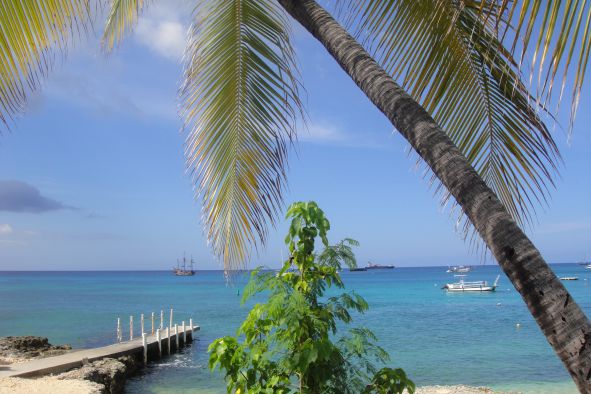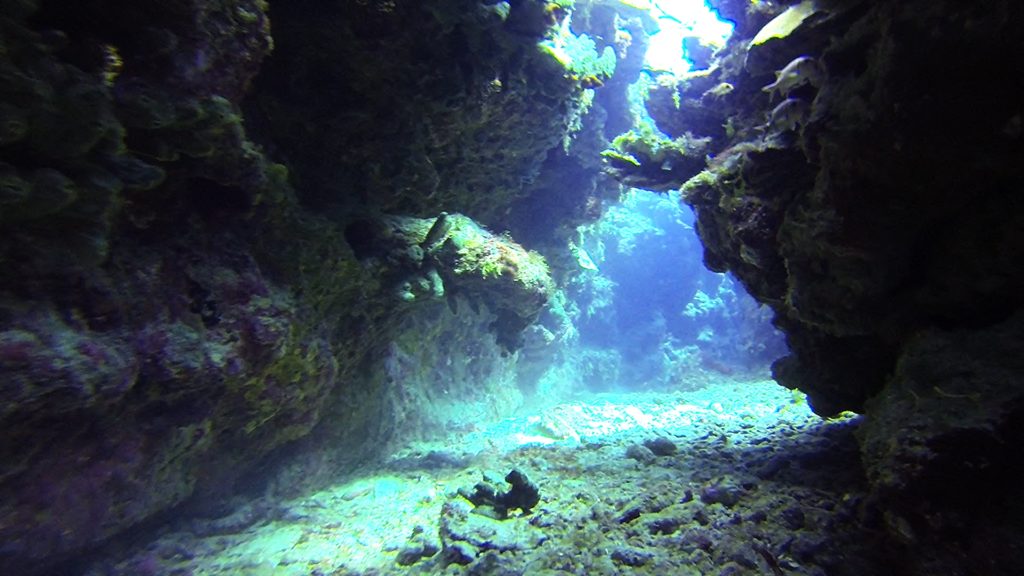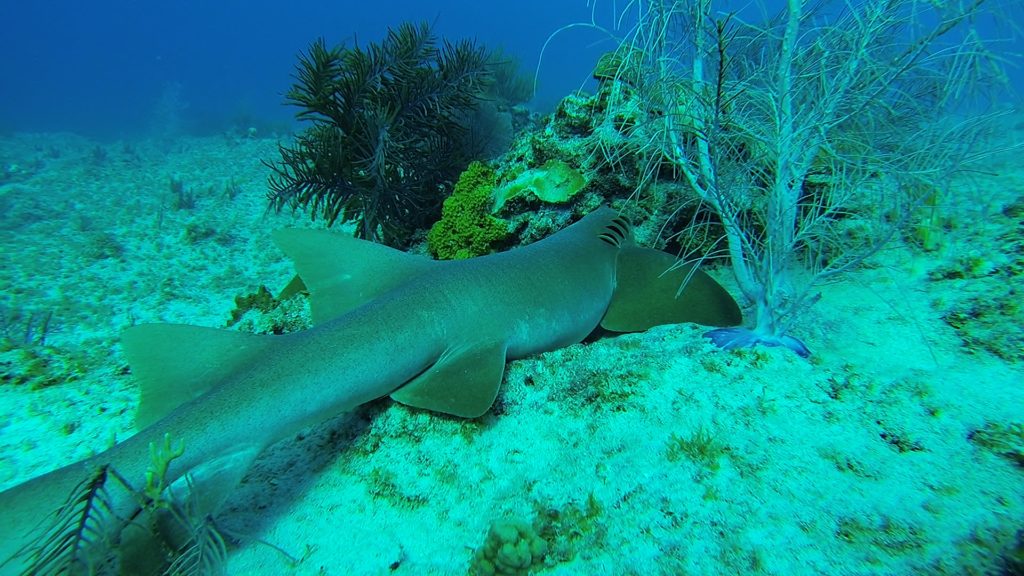The ocean has always been a place of mystery. In 2000 BC the ancient Greeks started to create mythology in order to explain and make sense of the oceans. I wanted to discover what they didn’t. Investigate, to see if they were right. I wanted to explore another world here on earth, no matter what it had to offer.

The clear blue water of the Caribbean Sea (Photo: Sian Marsh)
I descended deep under the warm surface of the Caribbean Sea eventually landing on a sandy patch, knees first. I looked at my dive watch, what had felt deep was only five metres below the surface; I had a long way to go.
I was in Grand Cayman for two months to complete my Open Water scuba diving course and get a few dives logged. So here I was attempting my first Open Water dive.
Located south of Cuba, Grand Cayman is the biggest of the three islands which make up the Cayman Islands. It is 22 miles by six miles. The lack of water run-off from the island gives Grand Cayman endless visibility in the oceans. The reef is a shallow fringing reef that leads to wall diving, in some parts, down the Cayman trench which drops off to over seven thousand metres in places.
Before taking the giant stride into the ocean I had to first complete a few hours training, practicing skills in the pool. These skills had to be repeated across my Open Water course in the ocean.
Descending to the Depths

Sunlight shining through the coral (Photo: Sian Marsh)
We started to swim away from the shore over an area formed of white limestone rock with pioneer species of coral growing sporadically and large rainbow parrot fish bringing colour to this otherwise blank canvas.
We reached the reef that surrounds the island. The visibility was endless and I could see the mass of bright coral that lay ahead. It sloped gently away, like a rolling meadow into the deep blue colour of the sea. As we swam inches above the coral, our bodies descended following the contours of the reef.
We swam over fan corals, tube sponges, table corals, brain corals, staghorn corals, and many more, all in a myriad of colours. Every coral was exactly as the name describes, exactly how I had imagined them to be, except larger and more vivid. Corals get their colour from the algae that inhabit them, giving a wide variety for every individual species. Of the many fish swimming around us, we saw queen angel fish, grey snapper and trigger fish.
Everywhere I looked there were more fish, more corals and only my instructor and I to enjoy them. The oceans account for 70 per cent of the earth’s surface. That 70 per cent being unpopulated by humans. I would soon be one of the few people who was able to explore them and experience the solitude they offer, escaping from a world where it can difficult to find oneself alone.
Surprising Encounters

Hawksbill turtle swimming into the blue (Photo: Sian Marsh)
As we swam further out I realised my instructor was trying to gain my attention. I had been floating, weightless, lost in my own world of Greek mythological creatures, mermaids and enchanted ship wrecks. There was a hawksbill turtle munching on the coral which he had been trying to show me. We followed it as it swam gracefully away; its dark green and yellow shell camouflaged among the corals. It kicked up, swimming towards the surface, standing out now against the blue backdrop.
My instructor signalled for me to turn around and kick, facing the surface and swimming backwards. It felt strange and I felt apprehensive about what was behind me for the first time on the dive. Continuing to kick, looking up, I could see something out of the corner of my left eye, a person, standing. It couldn’t be. I turned my head and jumped, as if suddenly waking from a dream in which I had jumped off a cliff. It was the mermaid from my imaginary world. A statue of grey stone standing tall on the seabed among the corals.
The statue had been placed there by the dive centre to form an artificial reef and attraction for divers; and to scare new divers on their first Open Water dives.
Back to Life Above Sea Level

A nurse shark sleeping among the corals (Photo: Sian Marsh)
I checked my air, it had reached half way so it was time to head back to the shore. I had no idea which way to go; oblivious and not paying any attention while swimming out as I was awestruck by what was in front of me, wanting to continue swimming and investigating what was hiding under every rock and in every hole on the reef. My instructor knew the way back to shore, that was good enough for now. I knew I would have to start paying attention and learning to navigate myself, but it could wait while I enjoyed getting lost in the underwater paradise for a few more dives.
As we neared the end of the reef, almost back to the shore, my instructor caught my attention again. This time he was pointing out something I had been afraid of running into. A nurse shark lay, sleeping on a sandy patch of sea bed next to a rock. It wasn’t as intimidating as I had imagined. We left it sleeping peacefully and headed back to the ladder out of the water.
I was hungry. I had to eat. Once I did the fatigue started to set in and I felt distant and dissociated from reality; these are normal post-diving symptoms. I couldn’t face another dive, even after an hour’s break. I went home to sleep and return to my world of enchantment.
What a complete first dive it had been: Sharks, turtles, a rainbow of colour and a mermaid. I had discovered what the ancient Greeks didn’t. There were no monsters, no deities, just a magical landscape of colour and life. But this was my first dive discovering only a speck of the world’s oceans.
Jacques Cousteau said: “The sea, once it casts its spell, holds one in its net of wonder forever.” He couldn’t have been more accurate in his assessment. I was ready and willing to explore every inch possible of my new world and possibly even find some Greek mythological characters and enchanted shipwrecks along the way.